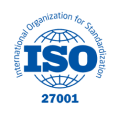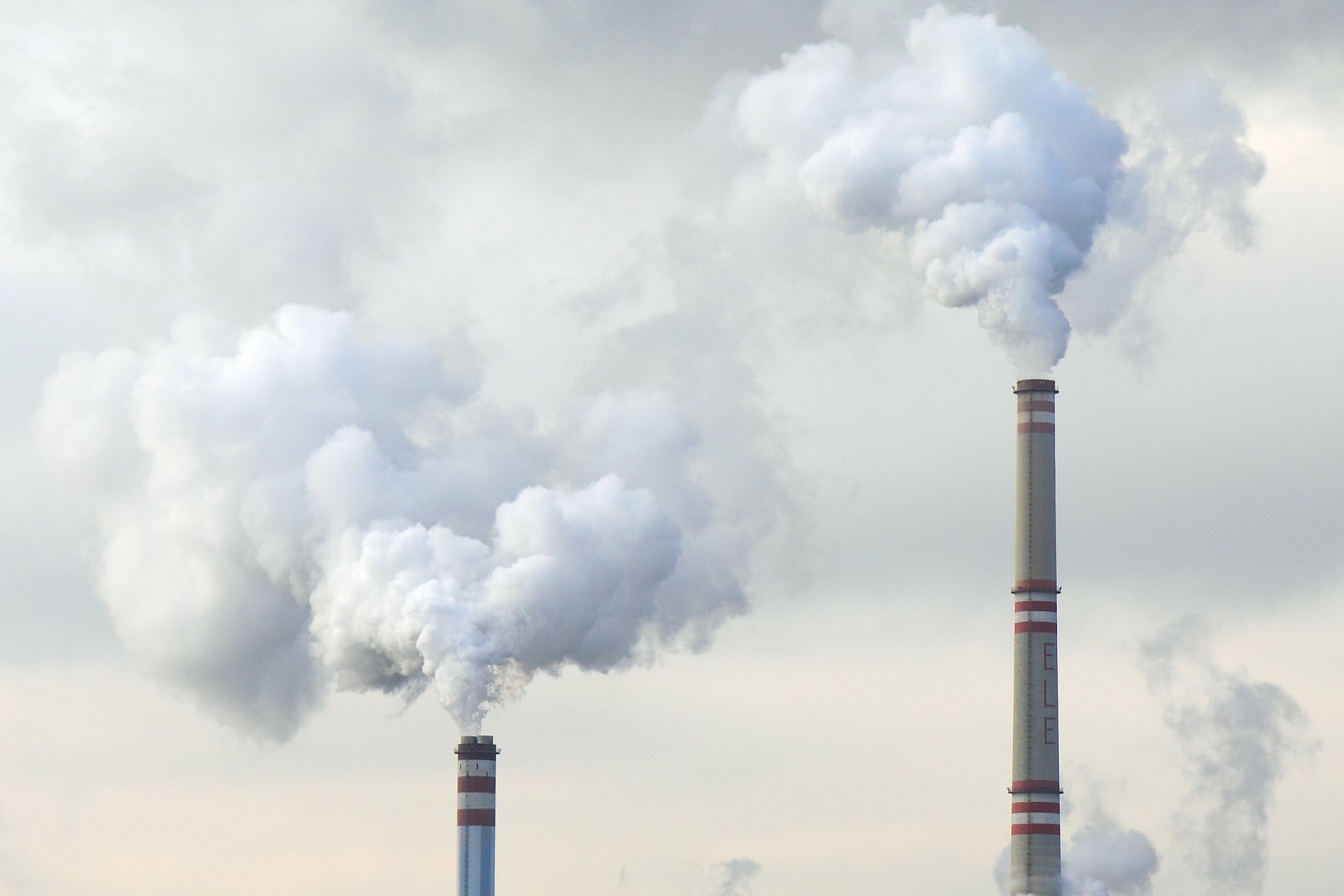

Did the air really get better because of quarantine?
UN Secretary-General António Guterres called on world leaders to use the situation created by the coronavirus pandemic to improve the world and work together to tackle other global threats such as climate change.
UN Secretary-General António Guterres called on world leaders to use the situation created by the coronavirus pandemic to improve the world and work together to tackle other global threats such as climate change. As we at United Consult are committed to a greener future, we have used our own tools to investigate the concrete links between the pandemic and the reduction in air pollution.
The According to MTI's reportthe UN Secretary General spoke via video during the two-day conference on the Petersberg Climate Dialogue. According to Guterres, the pandemic has highlighted how vulnerable our societies and economies are to these kinds of shocks. As he said, the only answer in this situation is courageous, visionary and cooperative leadership. “The same leadership is needed in the case of the existential threat of climate change”Guterres said there will be a significant cost if we do not act to stop climate change, but, as he said, technology is on our side.
As an IT company with twenty years of history, we can boldly confirm the words of the UN Secretary General. Technology is truly at the service of the present and the future, so much so that our colleagues, for example, have not been the first to call on data and the method of data analysis in connection with the epidemic situation. A few weeks ago we were looking for the answer is it possible to protect against the epidemic with data in Hungary, and this time we examined the correlations between curfew and air pollution status due to the Covid 19 pandemic.
NO2and the relationship of temperature
We followed up on the possible causes of the air pollution reduction, which have already been mentioned a lot in connection with the coronavirus pandemic. We wondered if, in the face of the many negative effects, we could save this positive change for the post-virus period.
Air pollution in the air NO2(nitrogen dioxide) concentration was investigated. TO NO2it comes mainly from the combustion products of vehicle fuel, as well as from energy production and heating. Therefore, the temperature and NO2concentration, of course, shows a strong relationship. As can be seen in the following figure, in winter, when the heating season is at its peak, the air pollution is always higher, and as the weather warms, the values decrease.

Source: European Environment Agency, National Centers for Environmental Information
Since the coronavirus has reached us precisely in this branch that is already landing, we also had to take into account weather changes in the analysis. To do this, we looked at whether this year's spring has reached us faster or slower compared to last year. We found that there was no significant difference between last year's and this year's temperature changes in the cities studied, so we were able to compare last year's and this year's NO2values.
Impact of restrictions on air pollution
But then what could have caused the sudden improvement in air pollution indicators in the countries most affected by the coronavirus? There is no question that, in addition to diseases and the social response to them, the various emergency measures have had a serious impact on the functioning of all countries and have resulted in a decline in most transport and industrial activities.
In our study, we attempted to show on a time scale how restrictions were tightened in five European capitals. On a scale of 10, we categorized the respective daily measures according to the following criteria:
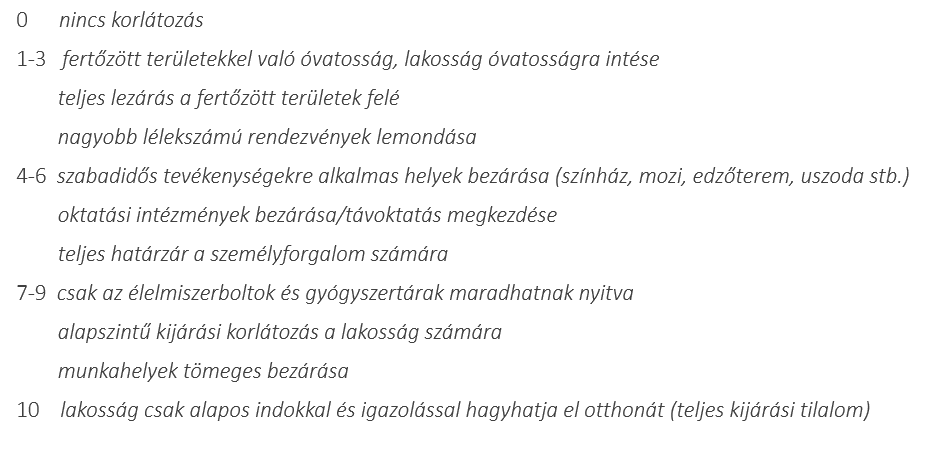
In the following we can see the NO2and the relationship of restrictions. In the figures we have highlighted the NO of last year and this year2we have been concentrating since January and at the same time we have set aside when and how strong restrictions have been in place in different cities. It is clear that in the cities where the strength of the restrictions reached the strongest, level 10, there is a significant decrease in last year's NO2compared to concentration.


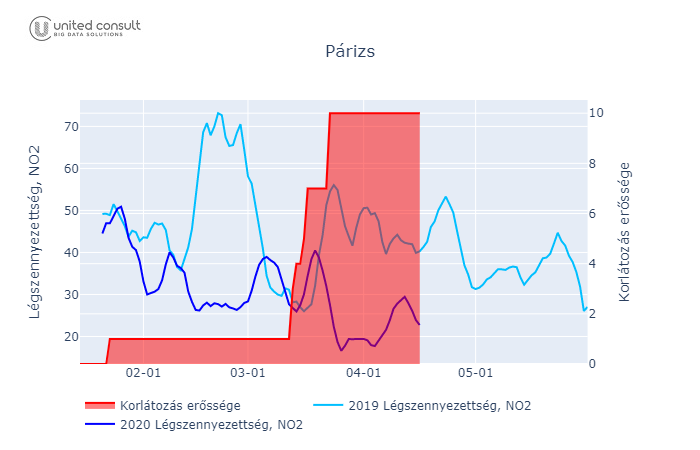
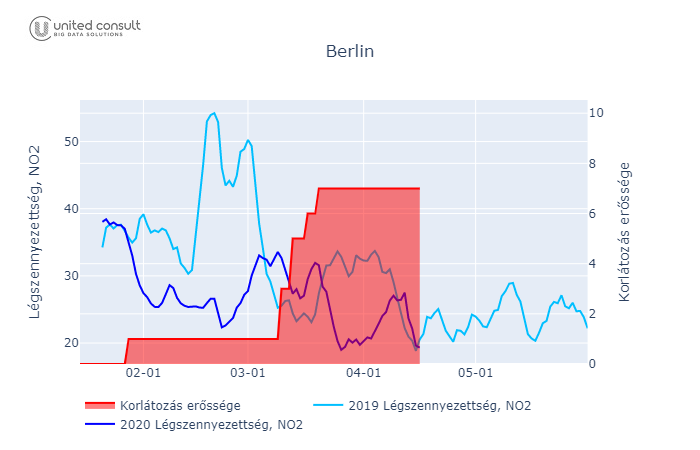

The results also show that although there was an initial decline in Budapest and Berlin — where restrictions have stopped at level 7 for the time being and no further tightening is reportedly expected — there was an initial decline, concentration soon returned to the usual level.
Economic impact of decisions
These observations confirmed that decisions made due to the pandemic have not only health but also serious environmental impacts. However, an important point of course — and policymakers should of course also consider this — is that restrictions do not only affect the speed and intensity of the spread of the virus and air pollution. Such measures also have a serious, typically negative impact on the economy. Exceptions may be limited to business areas related to online commerce and the manufacture and distribution of certain medical devices.
GDP data for the March-April period are not yet available, so we will use the so-called PMI (Purchasing Manager Index), an indicator based on a survey, to examine the evolution of the economic impact. Company executives make statements about new orders, inventory, production, supplier deliverables and changes in the employment environment. If the PMI is a figure above 50, it predicts economic growth, a narrowing of the value below 50, while the round 50 predicts no change from the previous month.
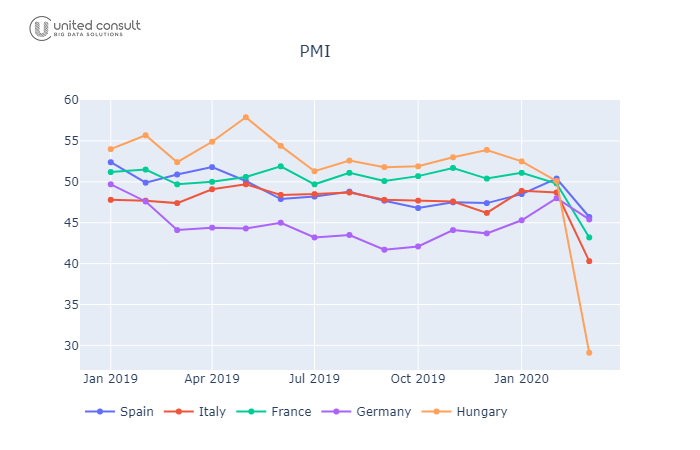
Source: Investing.com
The figure above clearly shows that the economy will be just as drastic, if not stronger, from a period of “quarantine” in the long term than air pollution. All in all, we can say that the leaders of the world's governments are facing very serious decisions: because now, as the UN Secretary General emphasized, they could take important steps against climate change, but it does not matter at what cost. For now, the question of the future is whether world leaders, seeing the reduction of air pollution in the wake of COVID 19, for example, will find the ideal measures that do not destroy the economy in the long term, but still bring visible improvements to environmental indicators.












